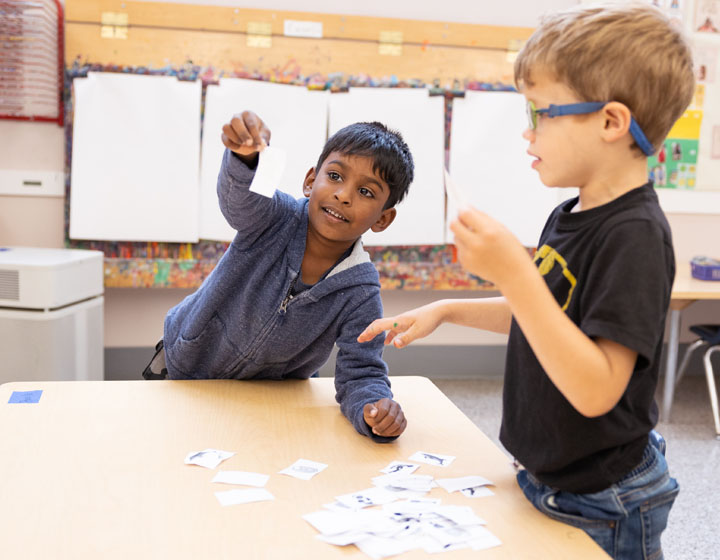
At the heart of our school program is the belief that children build knowledge and skills through active participation in problem-solving. Every aspect of the school day involves opportunities for finding new ways to approach a task, thinking about a situation from a different perspective, or connecting what we already know to an unfamiliar concept. Factual information is readily available to everyone on the internet, therefore it is now more important in education to consider what we do with that information, and how we make use of it to solve problems. Ken Robinson, the author of Out of Our Minds: learning to be creative, explains the critical importance of creativity in educating children for the future. One of the most common forms of creativity is problem-solving: taking a difficult or puzzling situation and finding a novel way to approach it. Robinson says, “The creative individual thinks of failure as a new opportunity.” In the classroom, on the playground, in the gym, and on the stage, finding solutions to new challenges is an integral part of every day at CRS.
In early childhood, problem-solving takes the form of manipulating one’s physical world to figure out how it works. When a child builds with blocks, she needs to find a way to support the structure as it grows so it does not fall down. On the playground, when two children want to play the same role in an imaginative game, they need to find a way to let everyone take part in the game. As CRS students move through the grades, the problems that they are given to solve take on new forms. When an emerging writer wants to convey his ideas in writing, feedback from a peer editor helps him figure out what was not clear and how to express his thoughts more effectively. When students are presented with the math “problem of the day”, they are encouraged to describe how they found their answer, and then to see if they can find a different way to solve it. Simulations, such as debates and Model UN are opportunities for students to think on their feet, framing rebuttals to arguments based on their interpretation of factual evidence.
As children grow older, their ability to find solutions to problems moves from their immediate experience of the physical world to more abstract concepts and perspectives. In part, their brains develop the capacity to understand abstractions and to work with them. In addition, through continuous training throughout each grade, children are given the chance to practice solving problems in every aspect of their daily lives and thus become skilled at solving problems with more and more complexity as they move through CRS. Based on our educational philosophy that children learn best through active inquiry and testing of their ideas, teachers give their students the tools to figure out potential solutions, rather than direct answers to their questions. In this way, teachers open up further opportunities for exploration and problem-solving.
